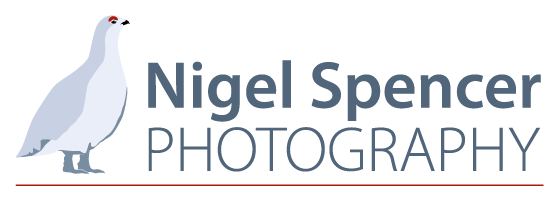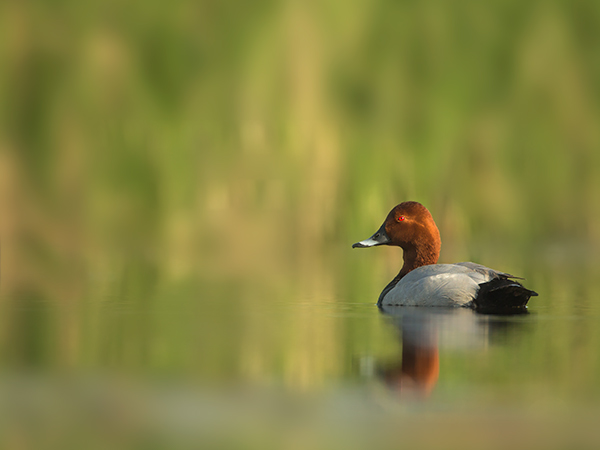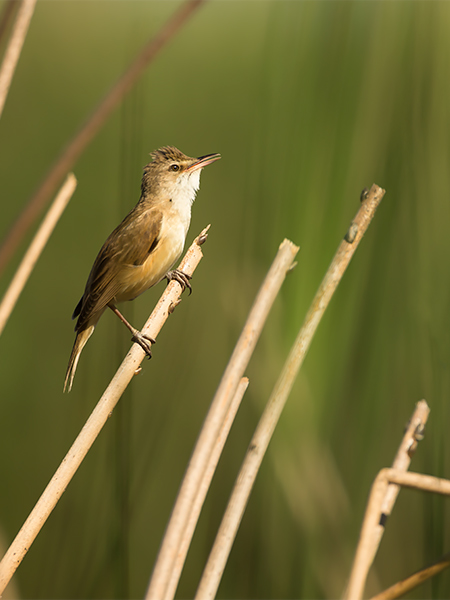| Floating Hides In Bulgaria |
|
Wildlife photography is a much wider and more varied activity than many people realise. There are thousands and thousands of subjects across the world that can be photographed and there are also many different ways of achieving this. Some species are not at all shy and many of these can easily be approached by walking slowly towards them and then quietly taking images. Other species need a lot more care and planning, and many of these are often photographed using a hide. Hides can vary from public hides in natures reserves through to specialist photography hides which are put into some great locations for specific species. Individual photographers can also put there own portable hides up and try their luck at wildlife photography. Purpose built photography hides have a big advantage that they are often situated at well proven locations which are designed specifically with the photographer in mind. Care is often taken to produce good backgrounds, take account of available light, and are at a close range to the species. This often provides very good images. But, sometimes these images look very similar to many hundreds of other images taken from the same site, I have used several of these hides myself and have been very pleased with some of the results. I have no problem with these hides and have used several of them over the years. But I also like to try and find something a bit more unique. Floating hides have been used by some photographers for many years, and I liked the idea of trying this out. Therefore, when I saw an advert for a short break using floating hides, I booked myself onto a short visit to the Danube Delta region of Northern Bulgaria where I spent 5 days photographing some of the great wildlife the region has to offer. This was my third trip to Bulgaria without any doubt it is certainly a country that has a broad selection of great wildlife to offer the photographer. |
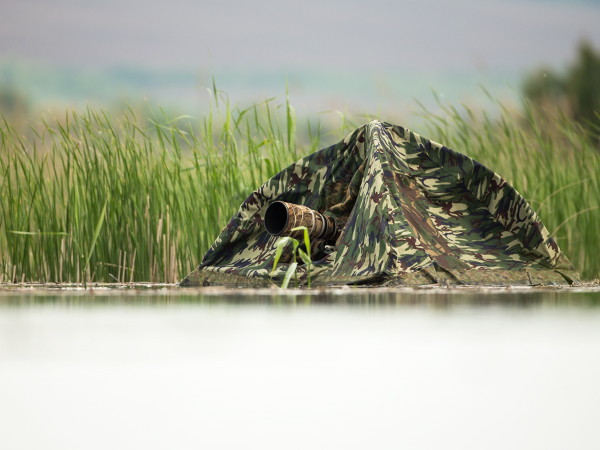 |
|
I am sure there are many designs of floating hides, but they all use the same basic principle. These Bulgarian ones consisted of a "U" shaped base which was very stable and was capable of holding the weight of the photographer and their gear. They are constructed from plastic, polystyrene, and ply wood. There is a screw fixed at the front where a tripod head could be mounted, but the photographer can also use a bean bag if they desire. This provides a basic float which is then turned into a hide with the addition of a simple frame and cammo cover similar to those used for any portable hide. |
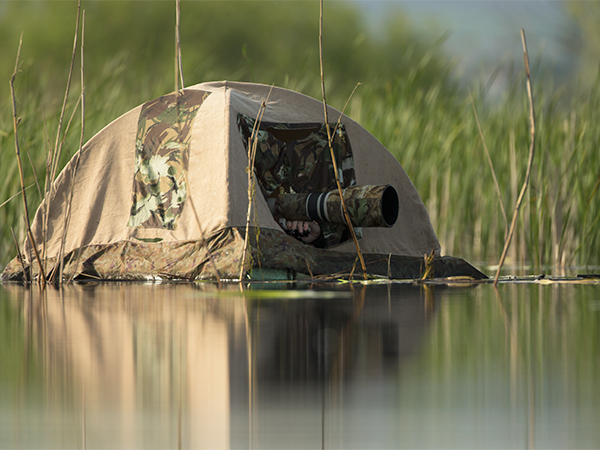 |
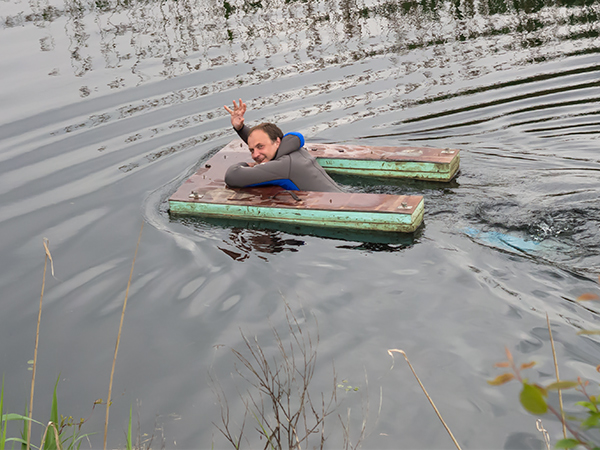 |
|
With wildlife photography it is fair to say that sometimes things don't always go exactly to plan, and this trip was no exception. The idea was to wear chest waders and we expected the water level would be between waist and chest deep. Indeed we were told the water level was chest level for several weeks before our visit and everything was fine. BUT When we arrived the water level was well above chest level and it soon became clear that waders were not going to be suitable for this particular photographic adventure. Luckily the local guides had a collection of old wet suits and these were quickly used instead of waders. The water level varied and the depth was usually such that we were swimming rather than walking. It is surprisingly difficult to keep a floating hide still when you can't touch the bottom and the wind and current are making you drift along. But with practice it is possible. It takes a bit of confidence paddling around in a wet suit with several thousand pounds of expensive camera gear only a few inches above the mighty Danube river. Swimming is made easier with the use of fins, and liberal amounts of duct tape was used to ensure the fins stayed on my feet whist paddling along. The water was measured at 16 deg, C. and this was warm but certainly not hot. Any hotter would probably have seen more midges and other problems. But it's not as bad as it sounds and provided the wind was not to high it was possible to spend several hours of photography before getting too cold. If you do get cold, you soon warm up by paddling a few hundred metres along the delta in search of another species. To add to the experience there are several other forms of wildlife sharing the water with you as well as the birds that you are targeting. Some of these are frogs and toads which can be very vocal and also offer you with a good photographic target themselves. We also encountered several grass snakes although the majority of these were seen on the end of the trip when we were doing some land based photography after the floating hide sessions were finished. The most unwanted of the additional wildlife was a large number of leaches which also lived in the delta. These are eaten by various birds including Red Necked Grebes, but were a real nuscience when in the hides. It would be fair to say I got my fair share of bites from these creatures and this was the only real downside of the visit. |
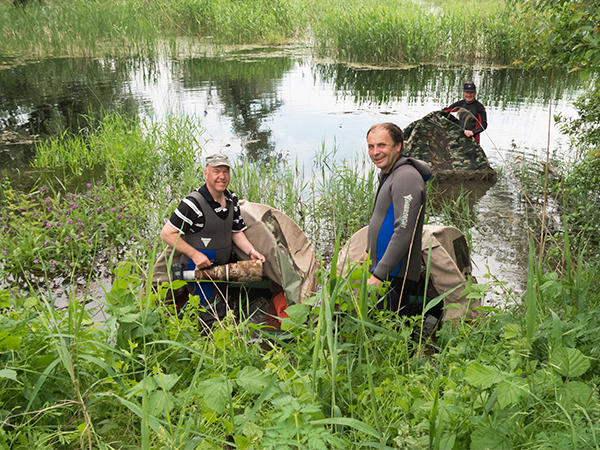 |
|
Personally, my main target of the trip were both the Black Necked and Red Necked Grebes, and generally adding more species to my portfolio of water birds such as herons and waders. I also hoped to see a few species that I had not seen before and generally return with a good set of images to complement my growing collection of European birds. As with a lot of wildlife photography, it's always best to try and photograph either first thing in the morning, or in the evening to try and make best use of the available light. This is also true when using floating hides and we had two sessions per day, but it takes a lot longer to prepare for a session in a floating hide than it does for a quick walk from the car to most commercial hides. but I feel the results proved this was a worthwhile trip and was worth the effort. All of the images below were taken from our six sessions in the floating hides. |
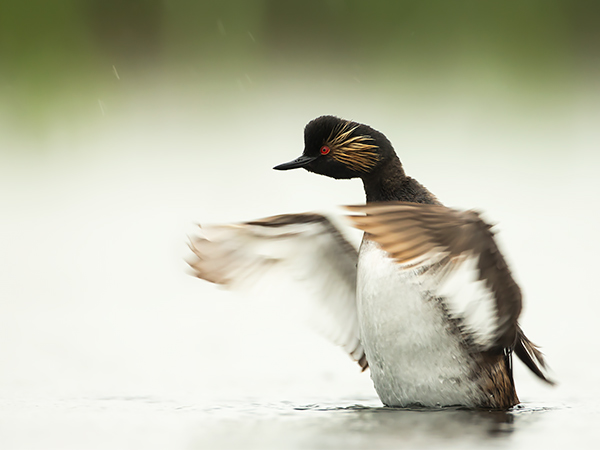 |
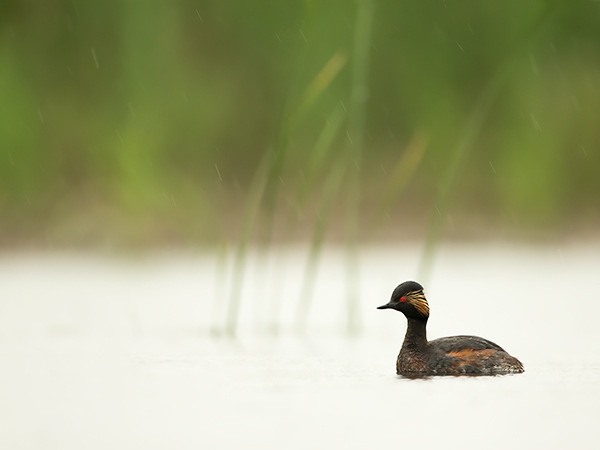 |
|
Two Grebe species in lovely breeding plumage above is a Black Necked Grebe and below is a Red Necked Grebe |
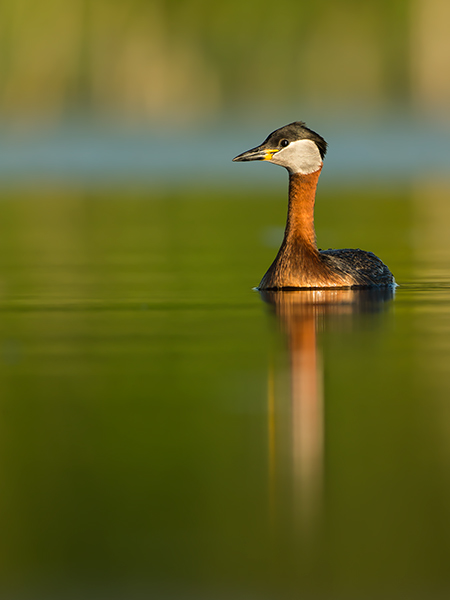 |
| One of the main attractions of floating hides is the low angle which always provides a good starting point for images. It is always good to see new species and rare species on any trip, but there were many common birds in the area and it is also good to photograph some commonly found species. |
 |
| Above Coot, below Gadwall |
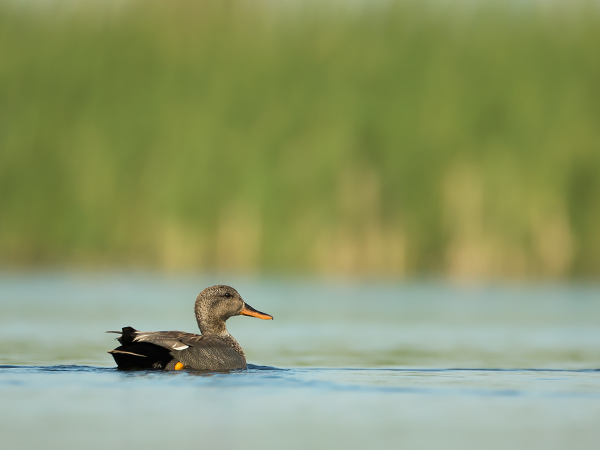 |
|
|
| Pochard male above and female below |
---C59O6616.jpg) |
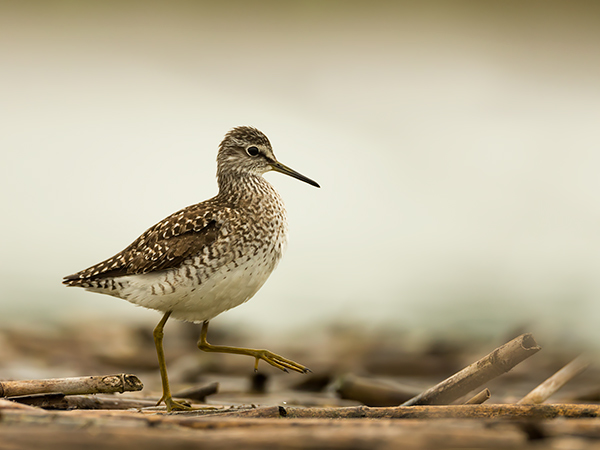 |
| As well as many duck and grebe species, there were good numbers of other species were seen and photographed including the Wood Sandpiper above. Below is a Lapwing, Whiskered Tern, and Great Reed Warbler. |
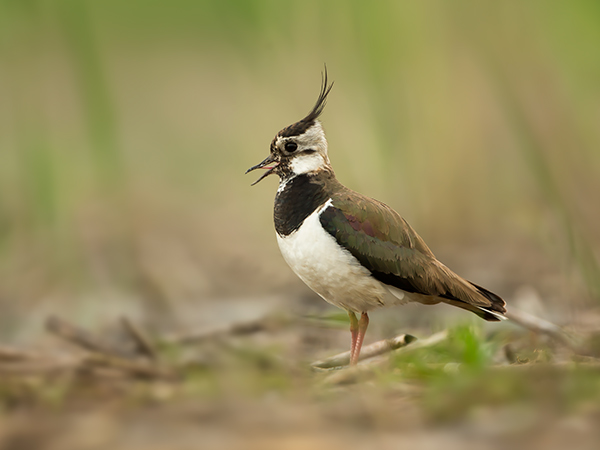 |
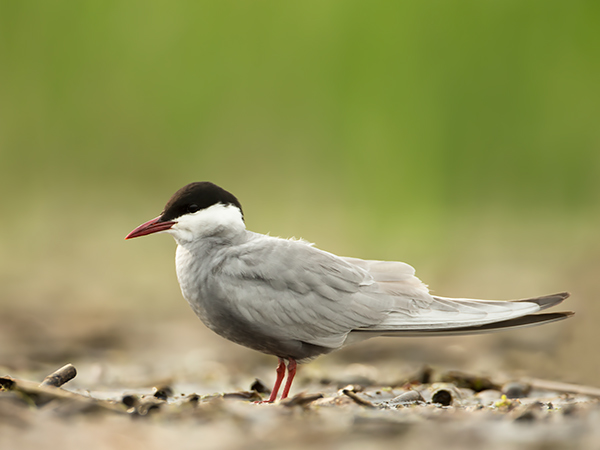 |
|
|
| I expected to see quite a few Herons, and we did see a few, but these along with the Bitterns proved quite hard to photograph. I was pleased to see and photograph this Squaquo Heron in a very typical habitat waiting patiently for prey on the edge of the reeds. |
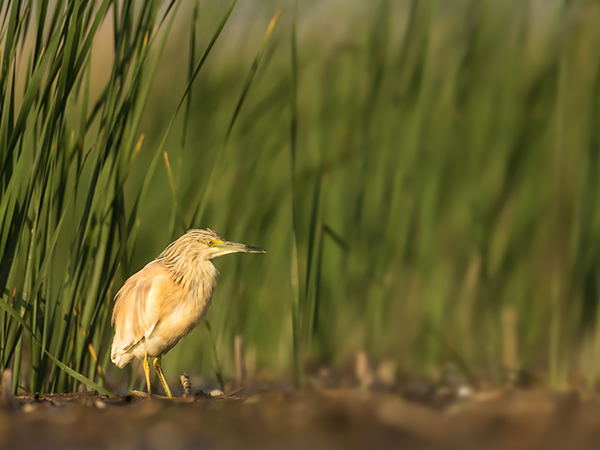 |
| From a point of view of a rarity and unexpected bonus species, the bird which I did not expect to see or photograph was the Collard Pratincole, but I was pleased to see a pair of these one morning sitting happily on some of the many dead floating reeds. |
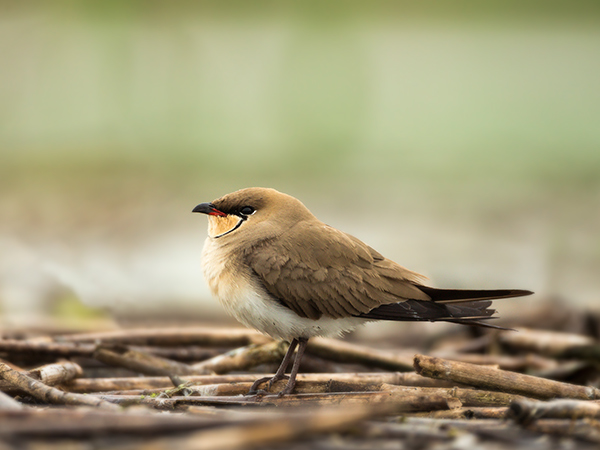 |
|
|
|
My visit to Bulgaria was with Natures Images with whom I have done a few wildlife photography trips over several years. This particular trip was organised by Mark Sisson, I booked the trip as soon as it was available which was over a year before departure. As mentioned above, I fancied something different, and it certainly lived up to that requirement, it proved some great images and some really good fun. Thanks to Mark for arranging this. |
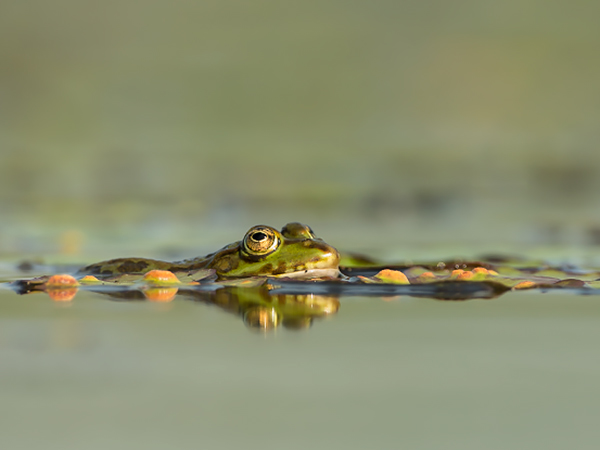 |
| To finish this page, above is one of the many thousands of Marsh Frogs encountered during our visit, while below is two typical delta scenes of the wetland habitat where we spent so many hours floating along in search of our next photographic targets. |
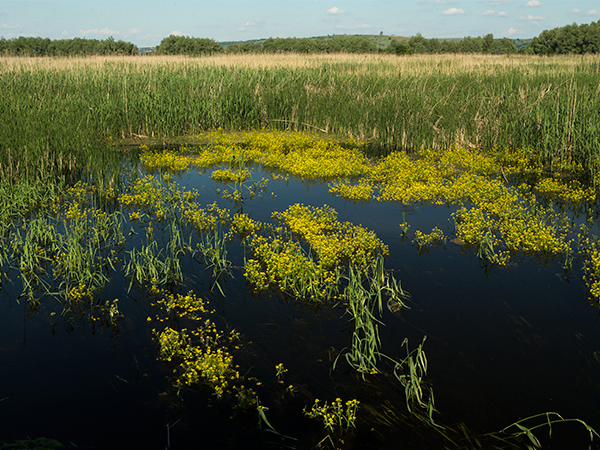 |
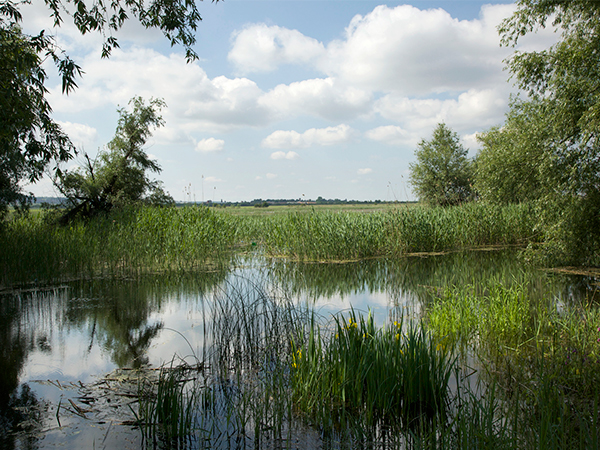 |
|
Of the several thousand images taken from these hides in Bulgaria, many will be used to update various talks, including one in preparation on European wildlife photography. They will also add more depth to my portfolio of images including some of the species and habitat pages on this website. I have also added a separate page on Black Necked Grebes |
| The images below were not taken from the floating hides, but were taken on the short journey from the delta back to our local hotel. |
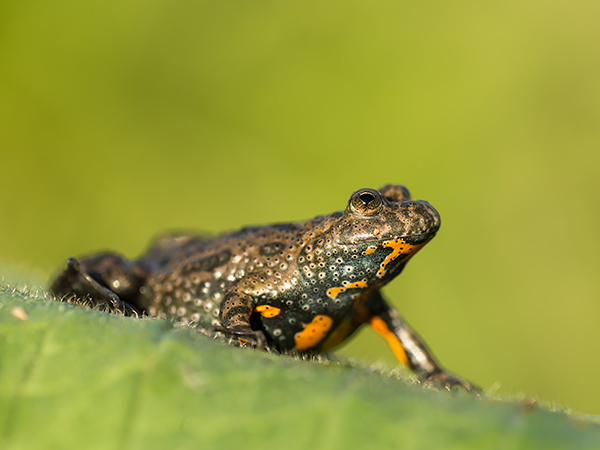 |
|
The Fire Bellied Toad is shown above, and whenever possible, its always good to finish the day with a colourful sunset. |
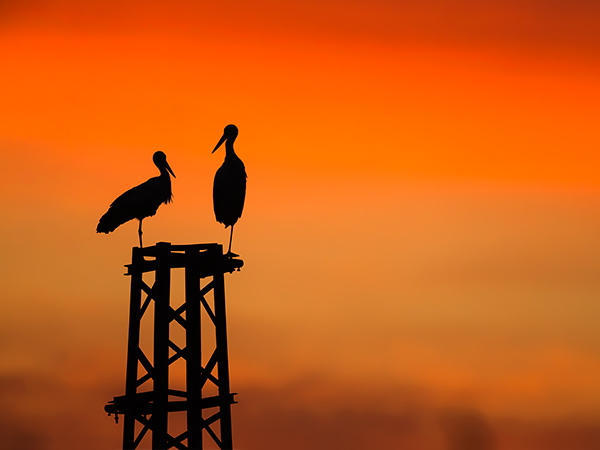 |
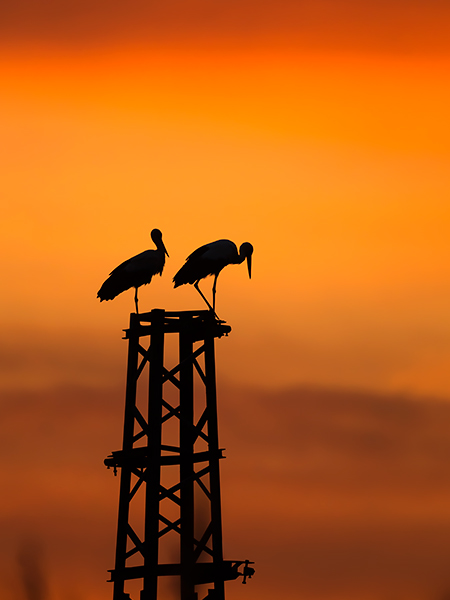 |
